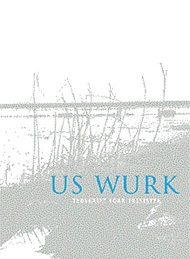Mûljearring: in oersjoch
Abstract
In Modern West Frisian, as a result of the New Frisian Breaking two rising diphthongs have developed with initial w, viz. /wo/ and /wa/. However, in the eastern part of the language area these sequences are nowadays
frequently pronounced as [jo] and [ja], respectively. So, Frisian muorre ‘wall’ is pronounced as [mjor], and boartsje ‘to play’ as [bjatsj]. Within Frisian linguistics, this form of palatalisation is traditionally called
mûljearring. There is a phonotactic restriction to the change, since it only occurs after labial consonants. If the rising diphthong is not preceeded by a consonant, an initial labiodental approximant is firstly inserted. There are indications that in the youngest generation of Frisian-speakers the phonotactic restriction, which can be attributed to a filter that is also active in Dutch, is somewhat loosened. Although some 18th-century spellings seem to indicate otherwise, the beginning of the sound change must be dated at the end of the 19th century. The impetus was language contact, and to be more precise, the type of this contact-induced change is shift, which is fairly uncommon in the Frisian language situation. The change started when Low Saxon peat diggers became integrated into Frisian society, and as a result of imperfect learning did not master fully those difficult Frisian diphthongs. A second centre of change was at the language border, at first especially in the south-east, where peat-digging also resulted in the mixing of populations. In the course of the 20th century, the new forms rapidly spread over the eastern part of the province, and today even a tendency of extension beyond that area exists. The chances for further expansion are even better since the initial social disapproval of the new phenomenon seems to have mostly disappeared.

